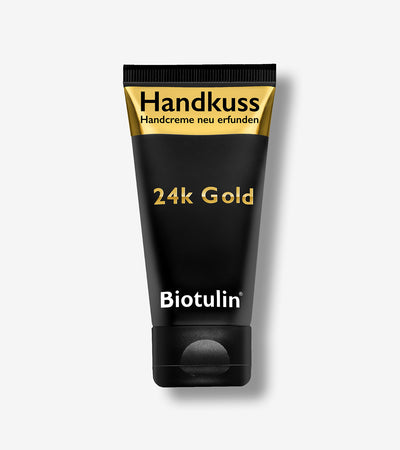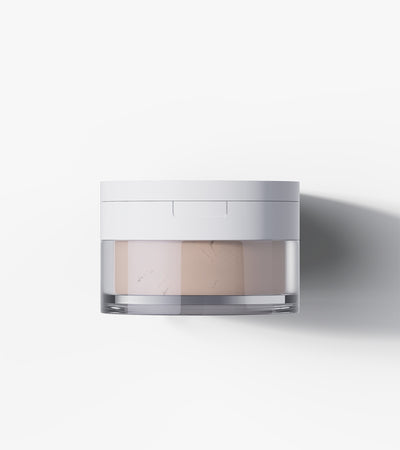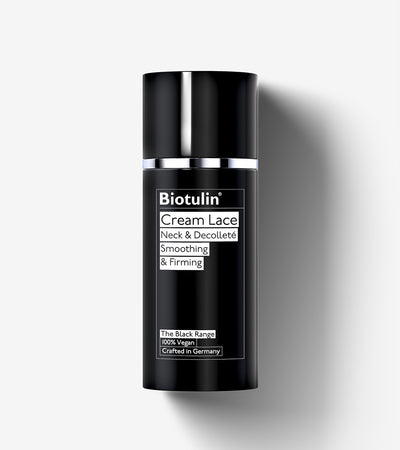Overview/Definition
Alpha-isomethyl ionone is a synthetic fragrance compound widely used in the cosmetics and personal care industry. It is known for its pleasant, floral-woody scent, which is often described as reminiscent of violets or orris root. This ingredient is part of the ionone family, a group of fragrance compounds that are highly valued for their aromatic properties. Alpha-isomethyl ionone is not naturally occurring but is synthetically produced, often through a process involving the cross-aldol condensation of citral with methyl ethyl ketone. This process ensures a consistent and high-quality scent profile that is used in a variety of products, including perfumes, skincare, and household cleaning agents.
The primary function of alpha-isomethyl ionone in skincare and cosmetic products is to enhance their fragrance. It is often used to create a pleasant scent or to mask unpleasant odors in formulations. Due to its versatility and appealing aroma, it is a popular choice among fragrance creators and is included in many well-known perfumes and cosmetic products. However, it is important to note that alpha-isomethyl ionone is also recognized as a potential allergen, and its use is regulated to ensure the safety of consumers, particularly those with sensitive skin.
Alpha-isomethyl ionone is a colorless to pale straw-colored liquid that is synthetically produced. It is an isomer of methyl ionone and is known for its sweet, orris-like scent, which is often preferred in fragrance formulations. The compound is part of the ionone family, which includes many fragrance ingredients known for their floral and woody notes. Alpha-isomethyl ionone is widely used in the fragrance industry due to its desirable scent profile and is included in various products such as perfumes, colognes, and scented skincare items.
The use of alpha-isomethyl ionone is regulated by several international bodies, including the International Fragrance Association (IFRA) and the European Cosmetics Regulation. These organizations have established guidelines for the safe use of alpha-isomethyl ionone in fragrance products, including concentration limits and labeling requirements. The IFRA has set restrictions on the use of mixed isomers of methyl ionone, including alpha-isomethyl ionone, due to their potential to cause skin sensitization. In the European Union, the presence of alpha-isomethyl ionone must be indicated on the ingredient list if its concentration exceeds 0.001% in leave-on products or 0.01% in rinse-off products.
Function in Skincare
Alpha-isomethyl ionone primarily serves as a fragrance ingredient in skincare products. Its main functions include:
- Fragrance Enhancement: It is used to impart a pleasant, floral-woody scent to skincare products, making them more appealing to consumers. This can enhance the overall user experience by creating a more enjoyable sensory profile.
- Masking Odors: In some formulations, alpha-isomethyl ionone is used to mask unpleasant odors from other ingredients, ensuring that the product has a consistent and appealing fragrance.
While alpha-isomethyl ionone contributes to the sensory appeal of skincare products, it does not provide direct skincare benefits such as moisturization, anti-aging effects, or skin protection. Its primary role is to enhance the product's fragrance.
Skin Type Suitability
Alpha-isomethyl ionone is generally suitable for all skin types, including oily, dry, and combination skin. However, individuals with sensitive skin or known allergies should exercise caution when using products containing this ingredient. Alpha-isomethyl ionone is a known allergen and can cause skin sensitization in some people. Those with a history of allergic reactions to fragrances or other cosmetic ingredients should be particularly mindful of its presence in skincare products.
For individuals with sensitive skin, it is advisable to perform a patch test before using a new product containing alpha-isomethyl ionone. This involves applying a small amount of the product to a discreet area of the skin and monitoring for any adverse reactions over 24-48 hours. If no irritation occurs, the product is likely safe to use.
Benefits
The primary benefits of alpha-isomethyl ionone in skincare products are related to its fragrance properties:
- Enhanced Product Scent: Alpha-isomethyl ionone provides a pleasant, floral-woody aroma that can make skincare products more appealing to use. This can improve the overall user experience and encourage consistent use of the product.
- Odor Masking: It helps to mask unpleasant odors from other ingredients in skincare formulations, ensuring a consistent and pleasant fragrance.
While these benefits contribute to the sensory appeal of skincare products, alpha-isomethyl ionone does not offer direct skincare benefits such as hydration, anti-aging effects, or skin protection. Its primary function is to enhance the fragrance of the product.
Potential Side Effects or Risks
Alpha-isomethyl ionone is generally considered safe for use in skincare products when used in accordance with established guidelines. However, there are some potential side effects and risks to be aware of:
- Allergic Reactions: Alpha-isomethyl ionone is a known allergen and can cause skin sensitization in some individuals. Symptoms of an allergic reaction may include redness, itching, and hives. Those with a history of allergies to fragrances or other cosmetic ingredients should be particularly cautious when using products containing this ingredient.
- Skin Irritation: In some cases, alpha-isomethyl ionone can cause skin irritation, particularly in individuals with sensitive skin. It is important to perform a patch test before using a new product containing this ingredient to check for any adverse reactions.
To minimize the risk of side effects, it is advisable to follow the usage instructions provided by the product manufacturer and to discontinue use if any signs of irritation or allergic reaction occur.
Usage in Skincare Products
Alpha-isomethyl ionone is commonly found in a variety of skincare and personal care products, including:
- Perfumes and colognes.
- Moisturizers and body lotions.
- Shampoos and conditioners.
- Body washes and cleansers.
- Deodorants and antiperspirants.
- Hair styling products.
- Sunscreens and after-sun products.
The concentration of alpha-isomethyl ionone in these products is typically low, usually ranging from 0.001% to 0.01% in leave-on products and up to 0.1% in rinse-off products. These concentration limits are established to minimize the risk of skin sensitization and allergic reactions.
How it’s used
To incorporate products containing alpha-isomethyl ionone into your skincare routine, follow these best practices:
- Patch Test: Before using a new product, perform a patch test to check for any adverse reactions. Apply a small amount of the product to a discreet area of the skin and monitor for any signs of irritation or allergic reaction over 24-48 hours.
- Follow Instructions: Use products as directed by the manufacturer. Most products containing alpha-isomethyl ionone are safe to use daily, but always follow the guidelines provided on the product label.
- Complementary Ingredients: Alpha-isomethyl ionone can be used in conjunction with other skincare ingredients that offer direct benefits, such as moisturizers, antioxidants, and anti-aging compounds, to create a well-rounded skincare routine.
Scientific Studies/Research
Several scientific studies and regulatory assessments have evaluated the safety and efficacy of alpha-isomethyl ionone. Key findings include:
- The International Fragrance Association (IFRA) has established guidelines for the safe use of alpha-isomethyl ionone in fragrance products, including concentration limits and labeling requirements. These guidelines are based on a comprehensive review of the available scientific data and are designed to minimize the risk of skin sensitization and allergic reactions.
- The Cosmetic Ingredient Review (CIR) Expert Panel has assessed the safety of alpha-isomethyl ionone and has determined that it is safe for use in cosmetic products at the established concentration limits. The CIR's assessment is based on a review of the available scientific literature and toxicological data.
- The European Cosmetics Regulation requires manufacturers to indicate the presence of alpha-isomethyl ionone on the ingredient list if its concentration exceeds 0.001% in leave-on products or 0.01% in rinse-off products. This regulation is designed to protect consumers and ensure the safe use of cosmetic products containing this ingredient.
These studies and regulatory assessments provide evidence that alpha-isomethyl ionone is a safe and effective ingredient for use in skincare products when used in accordance with established guidelines.
Other Names/Synonyms
Alpha-isomethyl ionone may also be listed under the following names:
- Alpha-iso-methylionone.
- 3-Methyl-4-(2,6,6-trimethylcyclohex-2-en-1-yl)but-3-en-2-one.
- Cetone alpha.
- Isomethyl-alpha-ionone.
Sustainability/Environmental Impact
The sustainability of alpha-isomethyl ionone depends on its production methods and the practices of the manufacturers that use it. As a synthetically produced ingredient, its environmental impact is primarily related to the energy and resources required for its manufacture. There is limited information available on the specific environmental considerations or certifications associated with alpha-isomethyl ionone. However, responsible manufacturing practices and adherence to regulatory guidelines can help minimize its environmental impact.
Consumers who are concerned about the environmental impact of their skincare products can look for brands that prioritize sustainability and responsible sourcing. Additionally, choosing products that are certified as environmentally friendly or that adhere to strict regulatory standards can help ensure that the ingredients used are sustainably sourced.
Fun Facts
Here are some interesting facts about alpha-isomethyl ionone:
- Alpha-isomethyl ionone is used in many well-known fragrances, including Chanel No. 5 and Paco Rabanne's 1 Million for men. Its versatile scent profile makes it a popular choice among perfumers.
- The synthesis of alpha-isomethyl ionone involves a cross-aldol condensation of citral with methyl ethyl ketone, a process that requires high temperatures and strong alkali. This process ensures a consistent and high-quality scent profile.
- Alpha-isomethyl ionone is part of the ionone family, a group of fragrance compounds known for their floral and woody notes. Ionones were first discovered in the late 19th century and have been used in the fragrance industry ever since.
Sources/References
For more information on alpha-isomethyl ionone, you can refer to the following sources:






